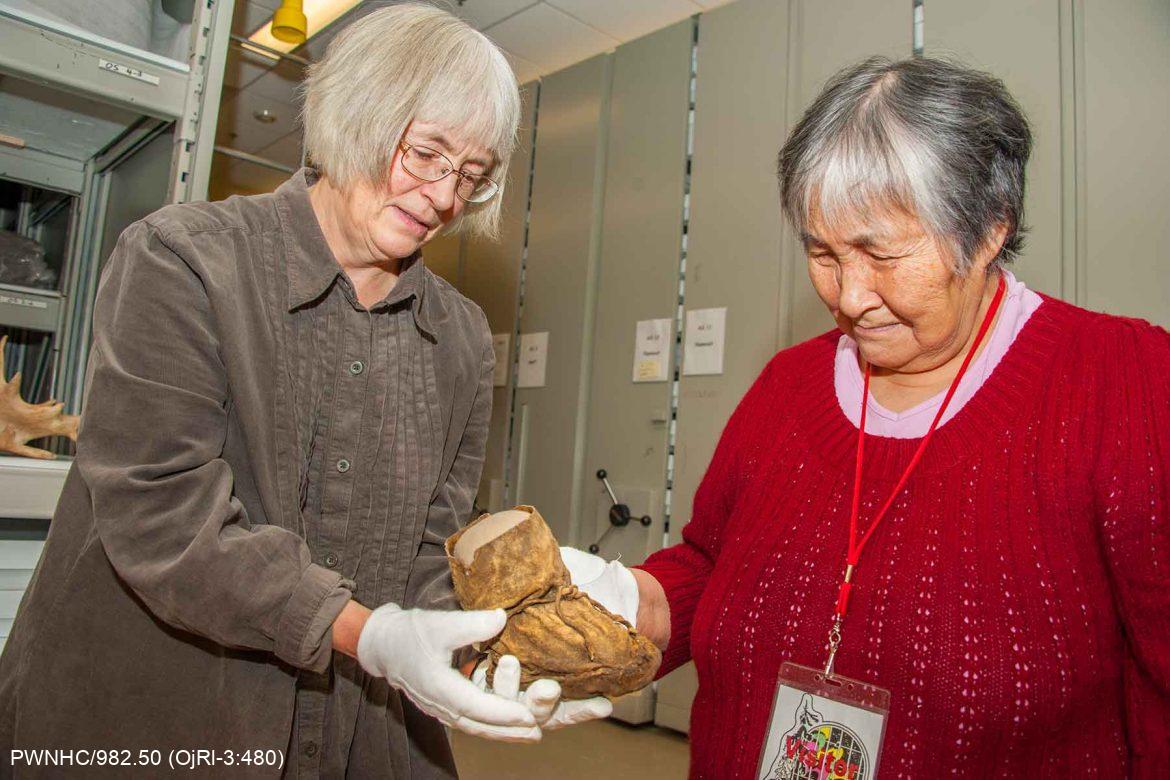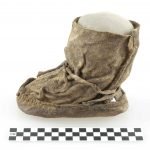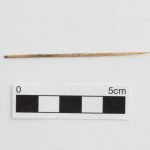2500 Years Ago
Kamik (Boot)
The Northwest Territories has always been a land of people in motion. Four thousand years ago, a group of people moved from Siberia, through Alaska and across the Arctic coastal regions of Canada. They developed a successful way of life using seals, caribou, muskox and other small sea mammals. Small, temporary settlements using tents and perhaps snow houses mark their existence. A period of cold climate change in the western Arctic possibly influenced another migration to eastern Arctic areas around 2500 years ago. The culture developed into the people known as the Dorsets. Pre-Dorset sites have been identified across the Inuvialuit region; Dorset sites in the NWT are rare.
Made over 2,500 years ago, this child’s boot or kamik is one of the oldest examples of footwear found in the Canadian Arctic. The Pre-Dorset people were believed to be very small. The kamik sole is less than 6 inches (17 cm) long, supporting the stories of the Inuarullit or ‘little people’ who live in holes in the ground. The small size is thought to reflect a child’s use. On the outside, the sole is sewn to the upper part of the boot with a running stitch of sealskin; overcast sinew stitching on the inside creates a waterproof seam. This sealskin kamik was uncovered on Banks Island during an archaeological project in the 1970s.
Many small tools for sewing and preparing animal skins were also found. The tools perhaps used to make the boot, needles and an awl made from bones, antlers, and stones illustrate the technology needed to create a sustainable existence.
In 2011, Kate Inuktalik from Ulukhaktok held this kamik and stated, ‘it is because of who made this that I am here,’ linking the skills of the seamstress with the survival of her people. Pre-Dorset people do not have a DNA connection to the Inuvialuit people, but the skills needed to survive in the Arctic, the seamstress’s talent and the hunters’ abilities transfer across the millennium.



